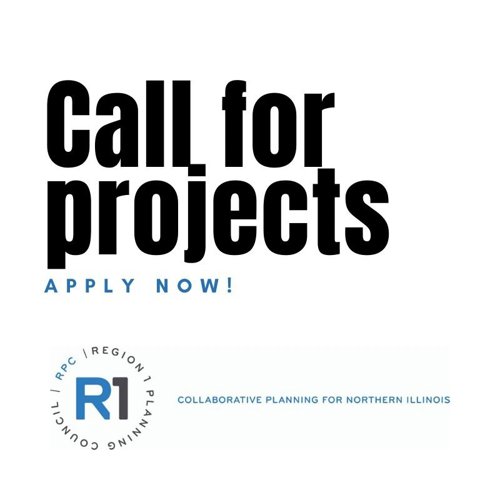MPO-Attributable Federal Funding
Notice is hereby given that the Region 1 Planning Council (R1), the federally-designated Metropolitan Planning Organization (MPO) for the Rockford Urban and Metropolitan Area, is seeking eligible projects for the programming of Surface Transportation Block Grant (STBG), Transportation Alternative Program (TAP), and Carbon Reduction Program (CRP) funds.
This Call for Projects is from October 30, 2025, through December 1, 2025. Completed applications must be submitted no later than 4:30pm on Monday, December 1, 2025. At this time the MPO intends to review applications for FY 2027-2028 apportionments allocated to the Rockford Urbanized Area.*
Annual Allocations
Surface Transportation Block Grant (STBG): $4,754,287
Transportation Alternative Program (TAP): $635,533**
Carbon Reduction Program (CRP): $645,279
Application materials can be found below:
- Policies & Procedures for the Distribution of Federal Transportation Funds (Guidelines)
- 2026 Project Solicitation Schedule
- Eligible Roadways
- Application Form
Questions may be submitted by email, telephone, or mailed to: Tim Verbeke, 127 N Wyman St., Suite 100, Rockford, IL 61101 | Phone: 815-319-4185 | Email: tverbeke@r1planning.org

About the MPO-Attributable Federal Funding
Surface Transportation Block Grant
The Surface Transportation Block Grant (STBG) provides flexible funding for a wide variety of projects, including highways and transit. Surface Transportation Block Grant funds are the most versatile and may be used for any project that is recommended in or consistent with the R1 Metropolitan Transportation Plan.
Funds can be used on any federal-aid roadway classified above a local road or a rural minor collector and bridge projects on any public road.
Eligible projects can include highway projects and bridge improvements (construction, reconstruction, rehabilitation, resurfacing, restoration, and operational), transportation system management, public transit capital improvement projects, commuter rail, carpool projects, bus terminals and facilities, bikeways, and pedestrian facilities.
Transportation Alternative Program
The goal of the Transportation Alternative Program (TAP) is to allocate resources to well-planned smaller scale, but critically important projects that provide and support connected alternate modes of transportation that are safe for all users, enhance the transportation system through preservation of visual and cultural resources, and improve the quality of life for members of the communities impacted.
Projects must enhance the transportation system be serving a transportation need or providing a transportation linkage, use, or benefit. Each project or activity must demonstrate a relationship to surface transportation. Project categories include: Pedestrian/bicycle facilities (on-road and off-road), sidewalks; Conversion of abandoned railroad corridors to trails; Streetscapes (stand-alone landscape projects are ineligible); Historic preservation and rehabilitation of historic transportation facilities; Vegetation management in transportation rights-of-way; Archaeological activities relating to impacts from implementation of a transportation project; Storm water management, control and water pollution prevention or abatement related to highway construction or due to highway runoff; Reduce vehicle-caused wildlife mortality or restore and maintain connectivity among terrestrial or aquatic habitats; and Construction of turnouts, overlooks, and viewing areas.
Carbon Reduction Program
The Infrastructure Investment and Jobs Act (IIJA) establishes the Carbon Reduction Program (CRP), which provides funding to projects and programs that reduce transportation emissions. Funding can be used for a wide range of projects that support this goal, including: Operational projects that improve traffic flow, such as the construction of roundabouts, left-turn lanes or other managed lanes; Intelligent Transportation Systems; Certain traffic control measures, such as traffic signal coordination, intersection improvements, and incident management; Construction of bicycle and pedestrian facilities; Promotion of alternative travel modes, including ridesharing; Acquisition, installation, or operation of publicly accessible electric vehicle charging infrastructure or hydrogen, natural gas, or propane vehicle fueling infrastructure; Construction of a bus rapid transit corridor or dedicated bus lanes; and Purchase of new public transportation facilities and equipment.
*The amounts for FY 2028 are subject to change based on future annual allocations.
**Available TAP funding for FY 2027-2028 is $4,538,983.
***Available CRP funding for FY 2027-2028 is $1,110,533.